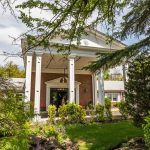Over a decade after the HUD Lean program was launched, the HUD Section 232 loan remains a popular, sound choice for skilled nursing and assisted living facility operators, according to Cambridge President Andrew L. Erkes. “HUD 232 has been a staple in the marketplace for decades, but certainly has garnered increased enthusiasm from both borrowers and lenders since the Lean program was introduced in late 2008,” he said.
The HUD 232 loan was first introduced in the 1930s as an FHA-backed mortgage for nursing homes, assisted living facilities, and board and care facilities. It mirrors the HUD 221 program, which was created to fund multifamily new construction and substantial rehabilitation. HUD 232 also funds new construction, refinancing, and rehabilitation projects, with both 221 loans and 232 loans being granted based on the real estate, not on the operating company.
While the two programs have many similarities, HUD 232 differs in that it reflects that licensed skilled nursing, assisted living and board and care facilities are heavily regulated businesses, as well as the fact that its income (rent/medical care payments) comes from a variety of different sources and third-party payors, particularly Medicaid and Medicare. HUD 232 also serves mainly an elderly population and older buildings (30-40 years), while 221 is aimed at residences that largely house younger people and families, and newer buildings.
The HUD Lean program was developed, in part, to address those subtle nuances and, ultimately, decrease processing time for HUD 232 loan applications. Prior to Lean, HUD 232 applications were under the Multifamily Accelerated Processing (MAP) or Traditional Application Processing (TAP) by the local HUD Field Office, just like HUD 221 loans. The new Lean process employs standardized work products and processes to obtain consistent, timely results in an efficient manner. With standardized checklists, statements of work for third-party work, and templates for the lenders to use in their assembly of the application package, Erkes agrees that the Lean process was a welcome change. “It didn’t change anything in terms of a borrower’s ability to qualify for a HUD 232 loan, but it streamlined the process considerably, making it much more straightforward both for borrowers and lenders.” The HUD 232 program itself, even before Lean was introduced, was, in Erkes’ opinion, “an excellent product for skilled nursing and senior housing buildings and provides a wonderful option for the savvy owner/operator”.
As for Cambridge’s success in the HUD 232 lending business, the statistics speak for themselves. Cambridge Realty Capital has been one of the top ten HUD 232 lenders in the United States. This is no small feat, considering Cambridge competes with numerous larger and national institutions. Additionally, Cambridge has closed more than 550 HUD loans worth more than $6.5 billion, as well as holding a servicing portfolio of approximately 200 loans totaling $2 billion dollars, almost exclusively consisting of senior housing assets and skilled nursing facilities.
“One of Cambridge’s core covenants is to never move forward on an application or take a deposit to acquire the third-party documents necessary for the application unless there is an extremely high probability that the application will go through,” Erkes iterated, “hence our 98% success rate.” He added, “Cambridge knows deals and what’s a good deal and what’s a bad deal. We will not wait for HUD to ask obvious questions on the deal, as we can pick those issues out up front and make the entire application process much smoother.”




